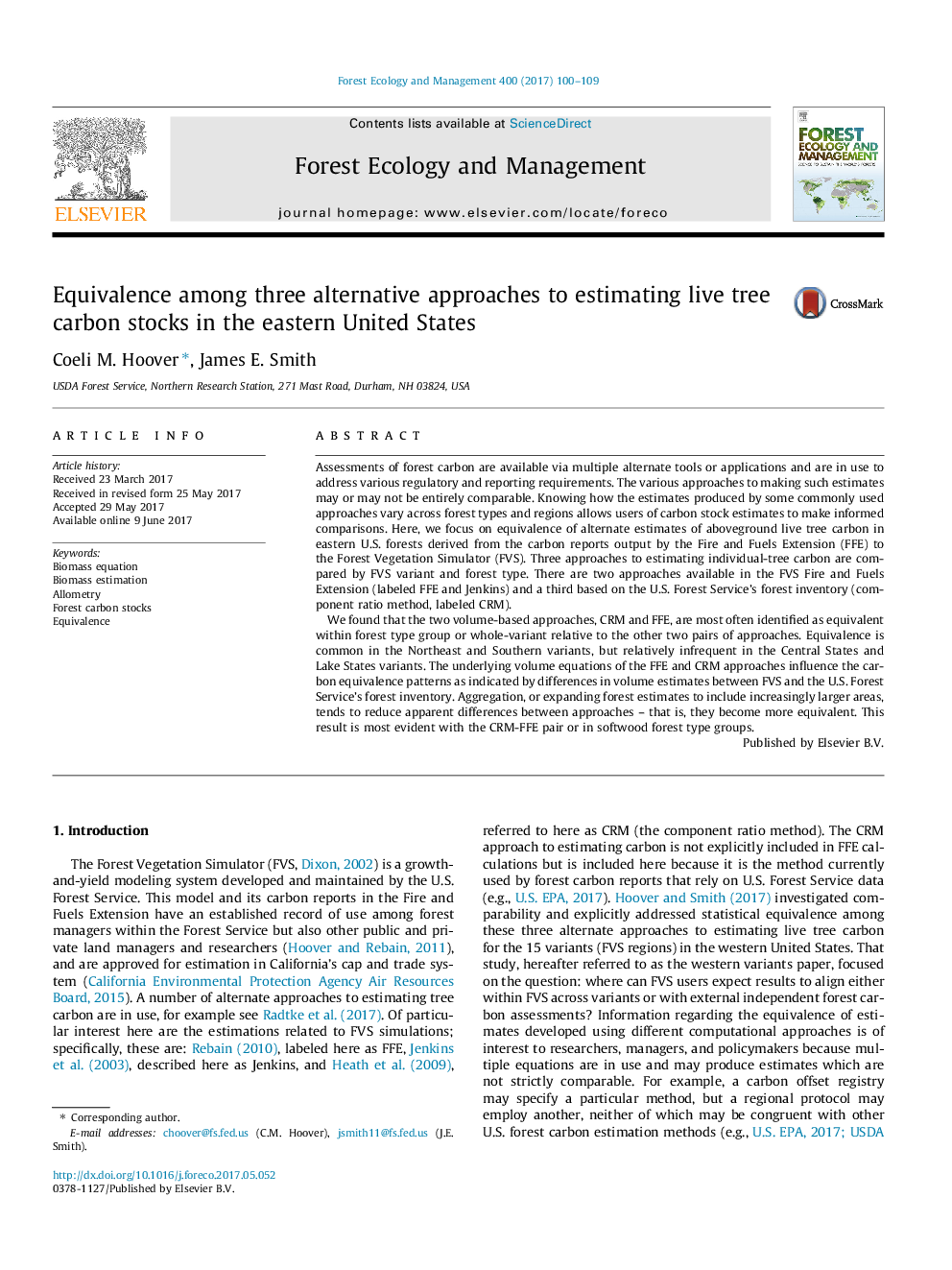| کد مقاله | کد نشریه | سال انتشار | مقاله انگلیسی | نسخه تمام متن |
|---|---|---|---|---|
| 6459210 | 1421358 | 2017 | 10 صفحه PDF | دانلود رایگان |
- The three approaches to live tree carbon stock are not consistently equivalent.
- Paired estimates are more commonly equivalent with increasing aggregation.
- The two volume-based approaches are those more often found to be equivalent.
- The underlying volume equations influence the carbon equivalence results.
- Equivalence is more likely among softwood than hardwood types.
Assessments of forest carbon are available via multiple alternate tools or applications and are in use to address various regulatory and reporting requirements. The various approaches to making such estimates may or may not be entirely comparable. Knowing how the estimates produced by some commonly used approaches vary across forest types and regions allows users of carbon stock estimates to make informed comparisons. Here, we focus on equivalence of alternate estimates of aboveground live tree carbon in eastern U.S. forests derived from the carbon reports output by the Fire and Fuels Extension (FFE) to the Forest Vegetation Simulator (FVS). Three approaches to estimating individual-tree carbon are compared by FVS variant and forest type. There are two approaches available in the FVS Fire and Fuels Extension (labeled FFE and Jenkins) and a third based on the U.S. Forest Service's forest inventory (component ratio method, labeled CRM).We found that the two volume-based approaches, CRM and FFE, are most often identified as equivalent within forest type group or whole-variant relative to the other two pairs of approaches. Equivalence is common in the Northeast and Southern variants, but relatively infrequent in the Central States and Lake States variants. The underlying volume equations of the FFE and CRM approaches influence the carbon equivalence patterns as indicated by differences in volume estimates between FVS and the U.S. Forest Service's forest inventory. Aggregation, or expanding forest estimates to include increasingly larger areas, tends to reduce apparent differences between approaches - that is, they become more equivalent. This result is most evident with the CRM-FFE pair or in softwood forest type groups.
Journal: Forest Ecology and Management - Volume 400, 15 September 2017, Pages 100-109
